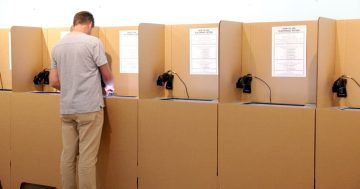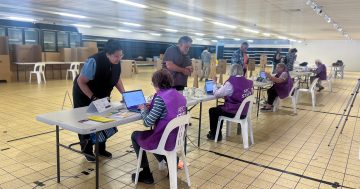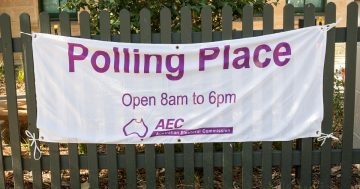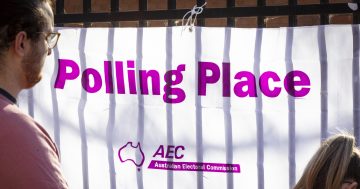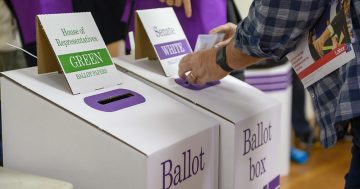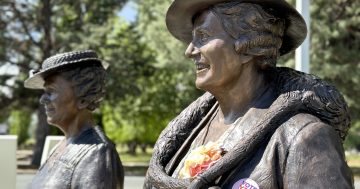
Pesec has expressed his concern about the instructions that were given to polling officials. Photo: George Tsotsos.
Senate candidate Anthony Pesec believes he may have been significantly disadvantaged in Saturday’s election and has complained to the Australian Electoral Office, alleging that some voters received incorrect advice about how to vote.
RiotACT first broke the story on Saturday night after comments from readers who had struggled to understand the Senate ballot paper.
“Post-election, many people have told me that they didn’t know how to vote and we have also heard a number of reports from people that AEC workers also didn’t provide correct advice,” Pesec said. The Pesec camp notified the AEC in writing about their concerns on Wednesday.
Because Pesec and his fellow candidate Gary Kent were grouped, rather than being registered as a political party, no name appeared on Box C for above the line votes, although both men’s names were printed below the line.
The pair had raised the name issue with the AEC before the election but were told, correctly, that legislation does not permit grouped candidates to be named above the line. With seven columns on the Senate paper, Pesec believes that many people may have assumed that one box had to remain blank. His how-to-vote cards were prepared to mitigate this risk.
“The rules are what they are, but it appears some staff were incorrectly advising people at several booths about whether they could number the blank box. Apparently, the AEC sent messages to all booths mid-morning, clarifying that an above the line vote in the blank box was valid”, he said. Pesec believes this indicates the AEC thought there was a problem.
The AEC’s Evan Ekin-Smyth confirms that messages were sent to all polling booths in Canberra after the Pesec team had raised the matter on election morning. However, he says, the issue was not raised once during the three-week pre-polling period when around 100,000 votes were cast.
“Mr Pesec told us he was concerned about instructions to polling officials. These were anecdotal observations, but we did confirm with all our officials that above the line votes were valid and confirmed our standard instructions to vote one to six at least above the line or one to twelve or more below.”
The AEC has received correspondence from Anthony Pesec and will reply to him. They say the ballot paper complied with legislation and unmarked boxes have appeared on a number of other ballot papers around the country. Mr Pesec also has the option of making a formal submission to the Joint Standing Committee that looks at the conduct of the election.
“We’ll look at the details and get back to him,” Evan Ekin-Smyth said. “Ballot papers aren’t marked, so they don’t tell you anything. You can’t ascertain what happened at the polling booth and whether the unmarked box is the voters’ preference or a problem. But we’ll do our best to ascertain what happened and respond.”
For his part, Pesec is still considering whether he will run again or not. He’s likely to make a submission about whether non-party candidates are disadvantaged by the current legislation.
He’s also hoping that when the vote count is completed, it will indicate that his below the line votes are proportionally higher than his above the line votes, indicating that there was a problem with the ballot paper. And he wonders if his vote would have been boosted enough to harvest more preferences and change the result.
“I gave it all I had, working seven days a week on this. I’ve had really good feedback about how it was run, people complimented us on the campaign and we had great volunteers. It was disappointing to see the result when we were fighting the disadvantage of the blank box. It’s a bit heartbreaking, but I’m proud of the campaign we ran.
“In the end, it’s good for democracy for people to be able to run as independents, but it’s already hard enough as an independent without the infrastructure of a party system for people to step aside from their day jobs and lives,” he said.












